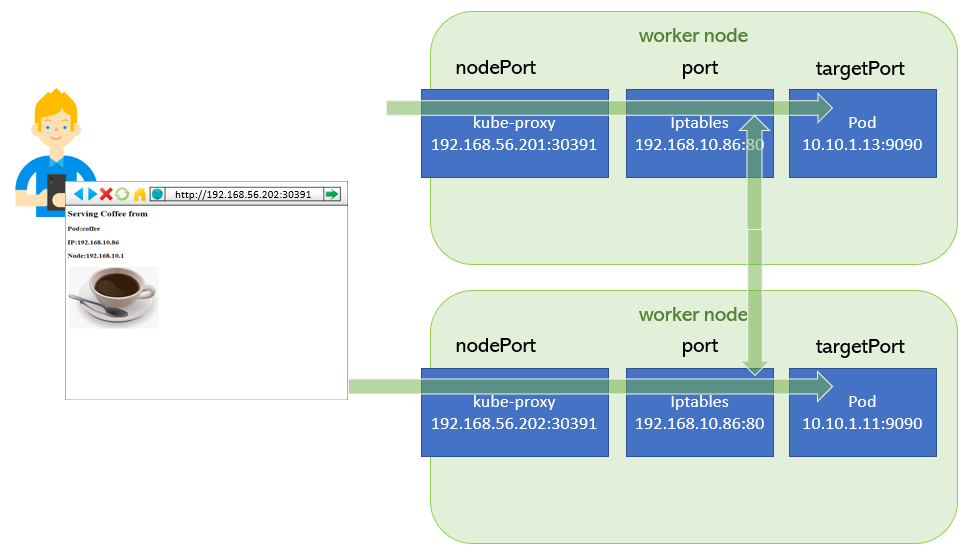Endpoints
Pods behind a service.

 Lets
Lets describe the service to see how the mapping of Pods works in a service object.
(Yes , we are slowly moving from general wordings to pure kubernetes terms)
$ kubectl describe service coffee
Name: coffee
Namespace: default
Labels: run=coffee
Annotations: <none>
Selector: run=coffee
Type: NodePort
IP: 192.168.10.86
Port: <unset> 80/TCP
TargetPort: 9090/TCP
NodePort: <unset> 30391/TCP
Endpoints: 10.10.1.13:9090
Session Affinity: None
External Traffic Policy: ClusterHere the label run=coffee is the one which creates the mapping from service to Pod.
Any pod with label run=coffee will be mapped under this service.
Those mappings are called Endpoints.
Lets see the endpoints of service coffee
$ kubectl get endpoints coffee
NAME ENDPOINTS AGE
coffee 10.10.1.13:9090 3h48mAs of now only one pod endpoint is mapped under this service.
lets create one more Pod with same label and see how it affects endpoints.
$ kubectl run coffee01 --image=ansilh/demo-coffee --restart=Never --labels=run=coffeeNow we have one more Pod
$ kubectl get pods
NAME READY STATUS RESTARTS AGE
coffee 1/1 Running 0 15h
coffee01 1/1 Running 0 6sLets check the endpoint
$ kubectl get endpoints coffee
NAME ENDPOINTS AGE
coffee 10.10.1.13:9090,10.10.1.19:9090 3h51mNow we have two Pod endpoints mapped to this service. So the requests comes to coffee service will be served from these pods in a round robin fashion.